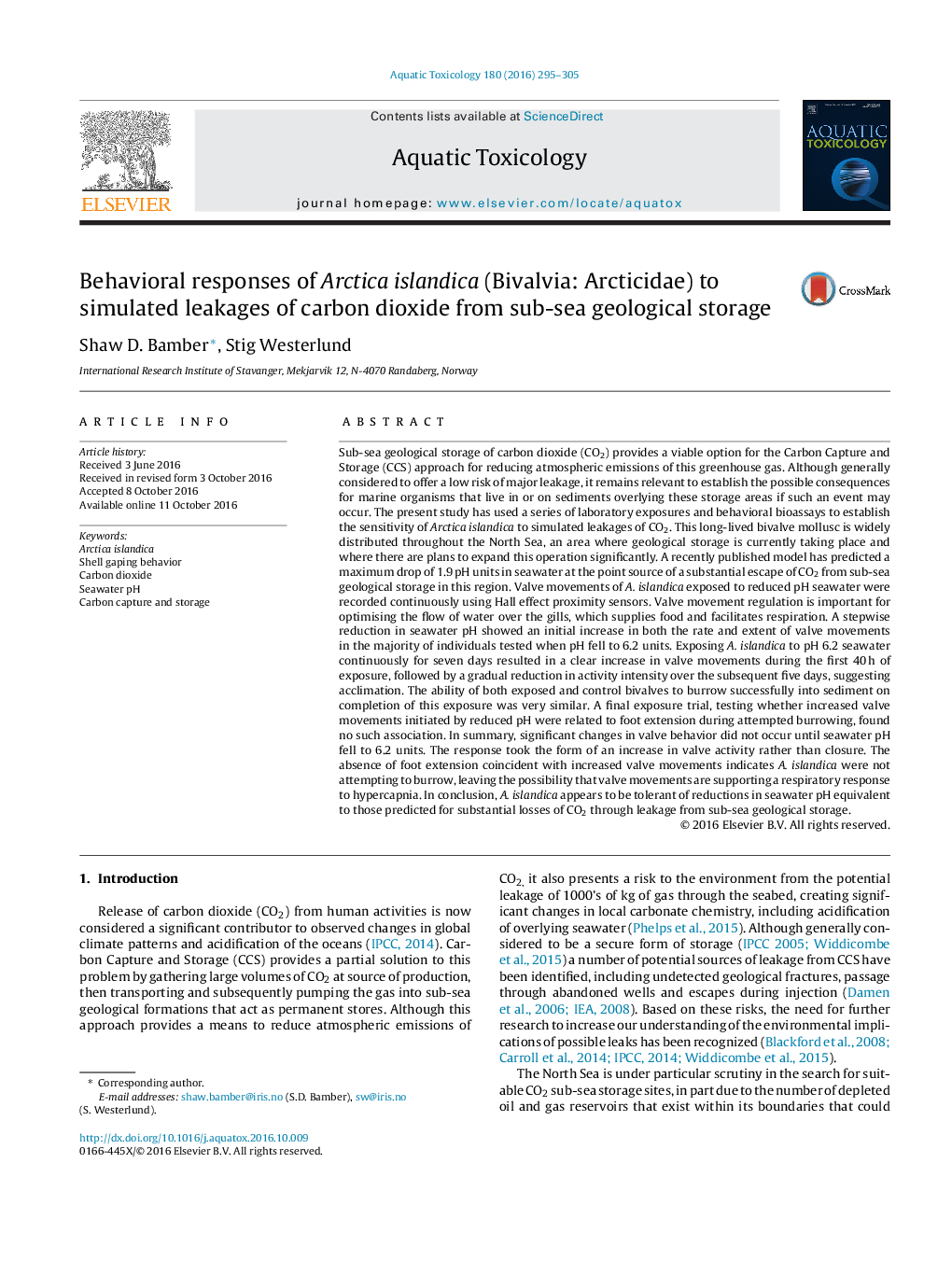| کد مقاله | کد نشریه | سال انتشار | مقاله انگلیسی | نسخه تمام متن |
|---|---|---|---|---|
| 6381863 | 1625925 | 2016 | 11 صفحه PDF | دانلود رایگان |
عنوان انگلیسی مقاله ISI
Behavioral responses of Arctica islandica (Bivalvia: Arcticidae) to simulated leakages of carbon dioxide from sub-sea geological storage
دانلود مقاله + سفارش ترجمه
دانلود مقاله ISI انگلیسی
رایگان برای ایرانیان
کلمات کلیدی
موضوعات مرتبط
علوم زیستی و بیوفناوری
علوم کشاورزی و بیولوژیک
علوم آبزیان
پیش نمایش صفحه اول مقاله

چکیده انگلیسی
Sub-sea geological storage of carbon dioxide (CO2) provides a viable option for the Carbon Capture and Storage (CCS) approach for reducing atmospheric emissions of this greenhouse gas. Although generally considered to offer a low risk of major leakage, it remains relevant to establish the possible consequences for marine organisms that live in or on sediments overlying these storage areas if such an event may occur. The present study has used a series of laboratory exposures and behavioral bioassays to establish the sensitivity of Arctica islandica to simulated leakages of CO2. This long-lived bivalve mollusc is widely distributed throughout the North Sea, an area where geological storage is currently taking place and where there are plans to expand this operation significantly. A recently published model has predicted a maximum drop of 1.9Â pH units in seawater at the point source of a substantial escape of CO2 from sub-sea geological storage in this region. Valve movements of A. islandica exposed to reduced pH seawater were recorded continuously using Hall effect proximity sensors. Valve movement regulation is important for optimising the flow of water over the gills, which supplies food and facilitates respiration. A stepwise reduction in seawater pH showed an initial increase in both the rate and extent of valve movements in the majority of individuals tested when pH fell to 6.2 units. Exposing A. islandica to pH 6.2 seawater continuously for seven days resulted in a clear increase in valve movements during the first 40Â h of exposure, followed by a gradual reduction in activity intensity over the subsequent five days, suggesting acclimation. The ability of both exposed and control bivalves to burrow successfully into sediment on completion of this exposure was very similar. A final exposure trial, testing whether increased valve movements initiated by reduced pH were related to foot extension during attempted burrowing, found no such association. In summary, significant changes in valve behavior did not occur until seawater pH fell to 6.2 units. The response took the form of an increase in valve activity rather than closure. The absence of foot extension coincident with increased valve movements indicates A. islandica were not attempting to burrow, leaving the possibility that valve movements are supporting a respiratory response to hypercapnia. In conclusion, A. islandica appears to be tolerant of reductions in seawater pH equivalent to those predicted for substantial losses of CO2 through leakage from sub-sea geological storage.
ناشر
Database: Elsevier - ScienceDirect (ساینس دایرکت)
Journal: Aquatic Toxicology - Volume 180, November 2016, Pages 295-305
Journal: Aquatic Toxicology - Volume 180, November 2016, Pages 295-305
نویسندگان
Shaw D. Bamber, Stig Westerlund,